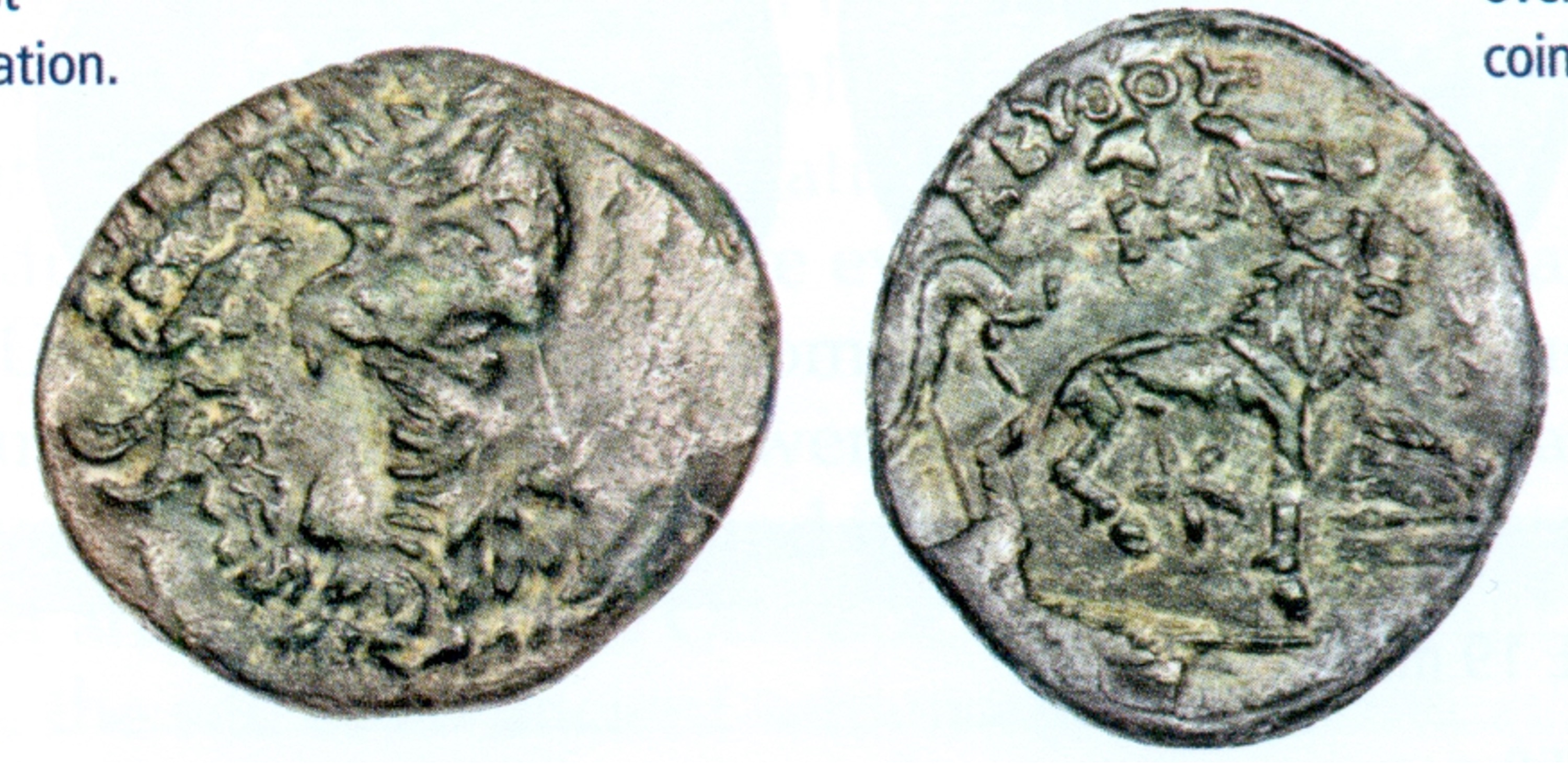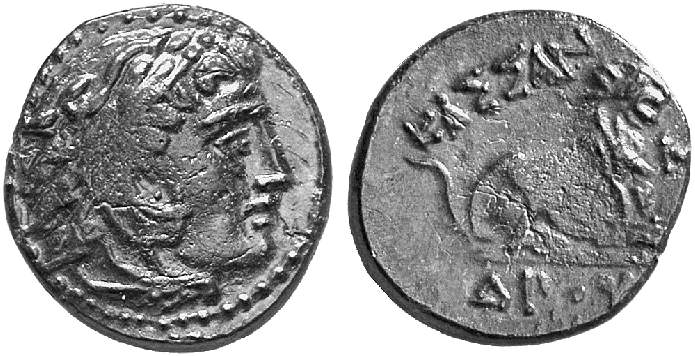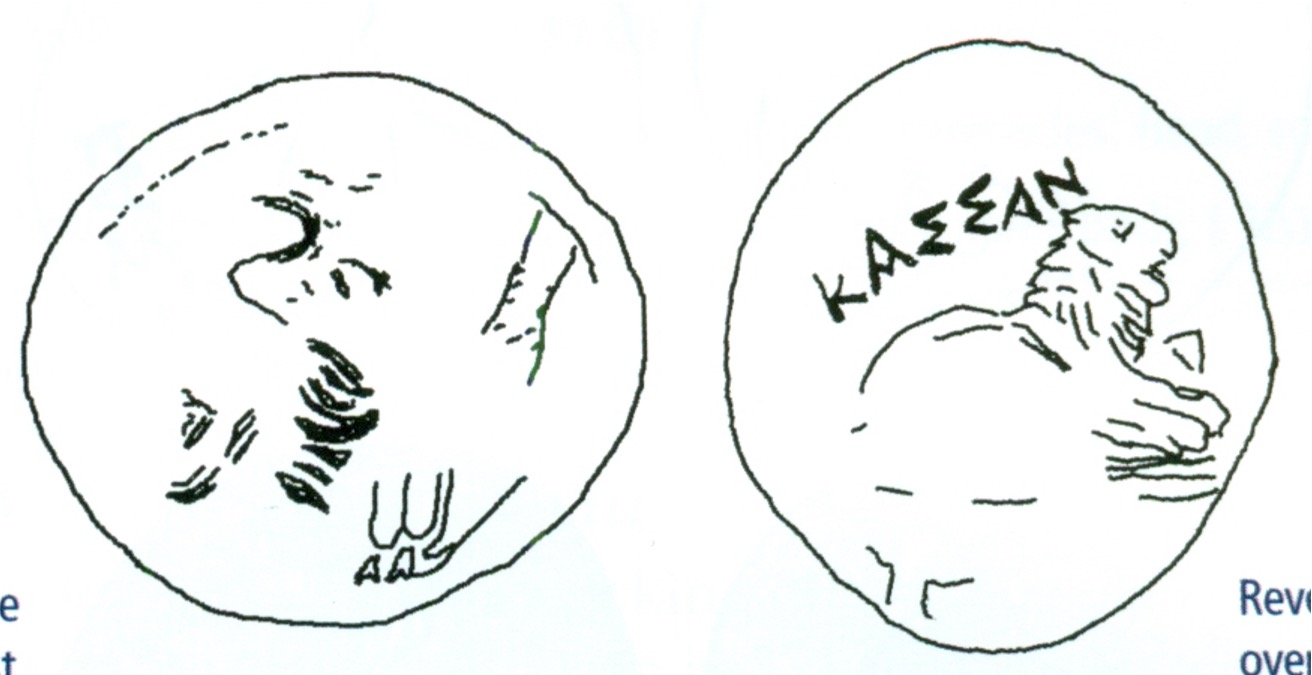309 BCE - 295 BCE | ΣΕΥΘΟΥ
Overstriking coin
SO 442 - Seuthopolis over uncertain mint.jpg
Overstruck variety
Cassander lion crouching.jpeg
[1]
442 Cassander (drawing).jpg
Description
| ObverseInscription or printing placed on the obverse.:
|
Male head (Zeus? Seuthes?) right, wearing laurel wreath.
|
ReverseInscription or printing placed on the reverse.:
|
ΣΕΥΘΟΥ (Greek) Horsman (Seuthes?) riding to right. Below, star.
|
Mint and issuing power
Chronology
| FromIdentifies the initial date in a range assigned in a numismatic context. 309 BCE toIdentifies the final date in a range assigned in a numismatic context.. 295 BCE
|
Hellenistic 323-30 BC  periodTime period of the numismatic object. periodTime period of the numismatic object.
|
Physical description
MetalThe physical material (usually metal) from which an object is made.: Bronze 
|
WeightWeight of the numismatic object (in grams). in grams: 3.613.61 g <br />3,610 mg <br />
|
|
AxisDescribes the directional relationship between the obverse and reverse of a numismatic object.: 55 mm <br />0.5 cm <br />
|
| DiameterDescribes diameter of an object (in mm).: 2020 mm <br />2 cm <br />
|
|
References
Description
| ObverseInscription or printing placed on the obverse.:
|
Head of Herakles right, wearing lion skin (visible: central portion of Herakles' head, vertically from top of head to neck and horizontally from back of ear to back of eye).
|
ReverseInscription or printing placed on the reverse.:
|
KAΣΣΑ(Ν)Δ(ΡΟΥ) (Greek) Lion crouching right. In field, Δ (visible: head and back of lion on horse, outline of foreleg).
|
Mint and issuing power
Chronology
| FromIdentifies the initial date in a range assigned in a numismatic context. 311 BCE toIdentifies the final date in a range assigned in a numismatic context.. 305 BCE
|
Hellenistic 323-30 BC  periodTime period of the numismatic object. periodTime period of the numismatic object.
|
Physical description
References
References
- ^ Macdonald, David (2009), Overstruck Greek coins: studies in Greek chronology and monetary theory, Whitman Publishing, Atlanta.
- ^ Hoover, Oliver D. (2017), Handbook of Coins of Macedon and Its Neighbors. 3. Part 2: Thrace, Skythia, and Taurike, Sixth to First Centuries BC, Lancaster-London, xix, 232 p.
- ^ Hoover, Oliver D. (2016), Handbook of coins of Macedon and its neighbors. 3. Part I: Macedon, Illyria, and Epeiros, sixth to first centuries BC, Lancaster, 437 p.
 Traces of the overstruck variety
Traces of the overstruck variety

